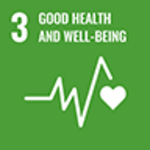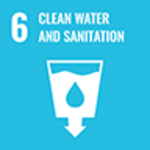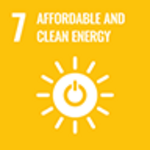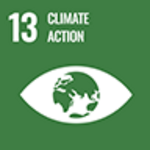
Professor Kazunori Iwabuchi
Affiliation:Graduate Research Faculty of Agriculture, Graduate School of Agriculture (Department of Bio-Environmental Engineering, School of Agriculture)
Specialized field: Bioresource recycling engineering
Research Keywords: material cycle, composting, carbonization, biomass energy, climate change
Alma mater: Ichinoseki Daiichi High School (Iwate Prefecture)
Final academic background: Graduate School of Agriculture, Hokkaido University
HP address: http://abse.bpe.agr.hokudai.ac.jp
*This article was originally published in the 4th issue of "Frontiers of Knowledge" and has been re-edited for the web. Updated on December 22, 2022
What we are aiming for
Our society faces many challenges related to the environment and energy. Solving these challenges is no easy task. So how should we go about solving such a difficult problem? The key to solving this problem is “sustainability.” I'm sure you've heard this word somewhere before.

Fig. 1 State where material circulation is established (top) and state where it is not established (bottom)
So what exactly does sustainability mean? To express sustainability simply, it refers to the state in which material circulation is established within a certain system. The systems considered here are different. For example, animals take in air, water, and food (input), and output in the form of movement and excretion. Blood and lymph circulate between the input and output. If an abnormality occurs in this system, it will not be possible to maintain life activities. Systems are large and small, and they are closely related. The environmental and energy problems I mentioned at the beginning can be said to be typical examples of problems caused by the failure of material circulation between the "natural circulation system" and the "human activity" system. Therefore, in the future, it will be essential to build a social system that enables material circulation in the true sense of the word, and we aim to realize this through education and research.
About previous research
We are conducting research on the recycling and energy conversion of waste biomass. Biomass is defined as “renewable organic resources derived from living organisms other than fossil fuels”. Biomass that we can use as energy can be broadly classified into two types. One is so-called unused biomass, such as non-edible parts of crops such as rice straw, wheat straw, and rice husks, and thinned wood. In particular, at first glance, waste-based biomass may look like nothing more than "garbage." However, in a system where material circulation is established, it should be understood as a "resource" rather than as a concept of garbage. In reality, most waste biomass is difficult to use as it is, so it is necessary to convert it into resources and energy by appropriate methods. At this time, it is of course important to consider the type and amount of biomass generated, as well as the areas where it is generated and used, but it is also important to consider whether material circulation is likely to be established. Composting is a representative technology for recycling waste biomass. 88 million tons of livestock manure is discharged annually in Japan, which is the largest amount of waste biomass. Approximately 90% of livestock manure is composted and returned to the soil as compost (organic fertilizer). Microorganisms play a major role in composting, and with their help, material circulation can be established without imposing a burden on the environment. In the natural world, a phenomenon similar to composting, that is, an activity in which microorganisms decompose animal carcasses and excrement and return them to the soil, occurs everywhere. However, in order to appropriately manage biomass, such as livestock manure, which is generated in large quantities in dairy farming areas, it is necessary to proceed with the composting reaction quickly. Therefore, in the composting reaction, in order to promote microbial decomposition, it is important to appropriately adjust the biomass material condition (gap, moisture content, temperature) and supply (aerate) the oxygen necessary for microbial respiration. Masu. From the research so far, the optimum material state, oxygen supply amount, temperature, etc. have been clarified. Compost also works to deodorize odorous substances such as ammonia. In the process of composting, ammonia is generated by protein decomposition, and odor becomes a problem. Since compost contains a group of microorganisms that deodorize ammonia, using compost as a deodorizing material is a rational choice. So far, we have found that nitrifying bacteria play an important role in ammonia adsorbed in compost.
About the research we are aiming for
Since there are some areas in Japan where the supply of compost is excessive, we aim to convert waste biomass into charcoal (carbonization) and use it as biomass fuel. Carbonization is a simple term, but it is not easy to dry and carbonize a muddy material with a high water content, such as livestock manure. Generally, carbonization requires the application of heat to biomass from the outside, but the amount of thermal energy used during this process is extremely large, and the disadvantage is that the more charcoal is produced, the more negative the energy balance becomes. Currently, in order to solve this problem, we are conducting research aiming to establish ultra-energy-saving carbonization technology by combining microbial reactions and chemical reactions. Unlike conventional carbonization methods, this technology can produce charcoal without applying heat from the outside, so biomass can be converted into energy without imposing a burden on the environment.

Fig. 2 Cow manure (left) and charcoal produced from cattle manure (right)
Reference books
“Food and Agriculture in Hokkaido Thinking with Dr. Aguri” Hokkaido Shimbun (2014)
"Latest Livestock Handbook" Kodansha Scientific (2014)
Reference information
Received the Agricultural and Food Engineering Society Academic Award (2022)
*You will be redirected to the Hokkaido University Research Faculty of Agriculture website




















